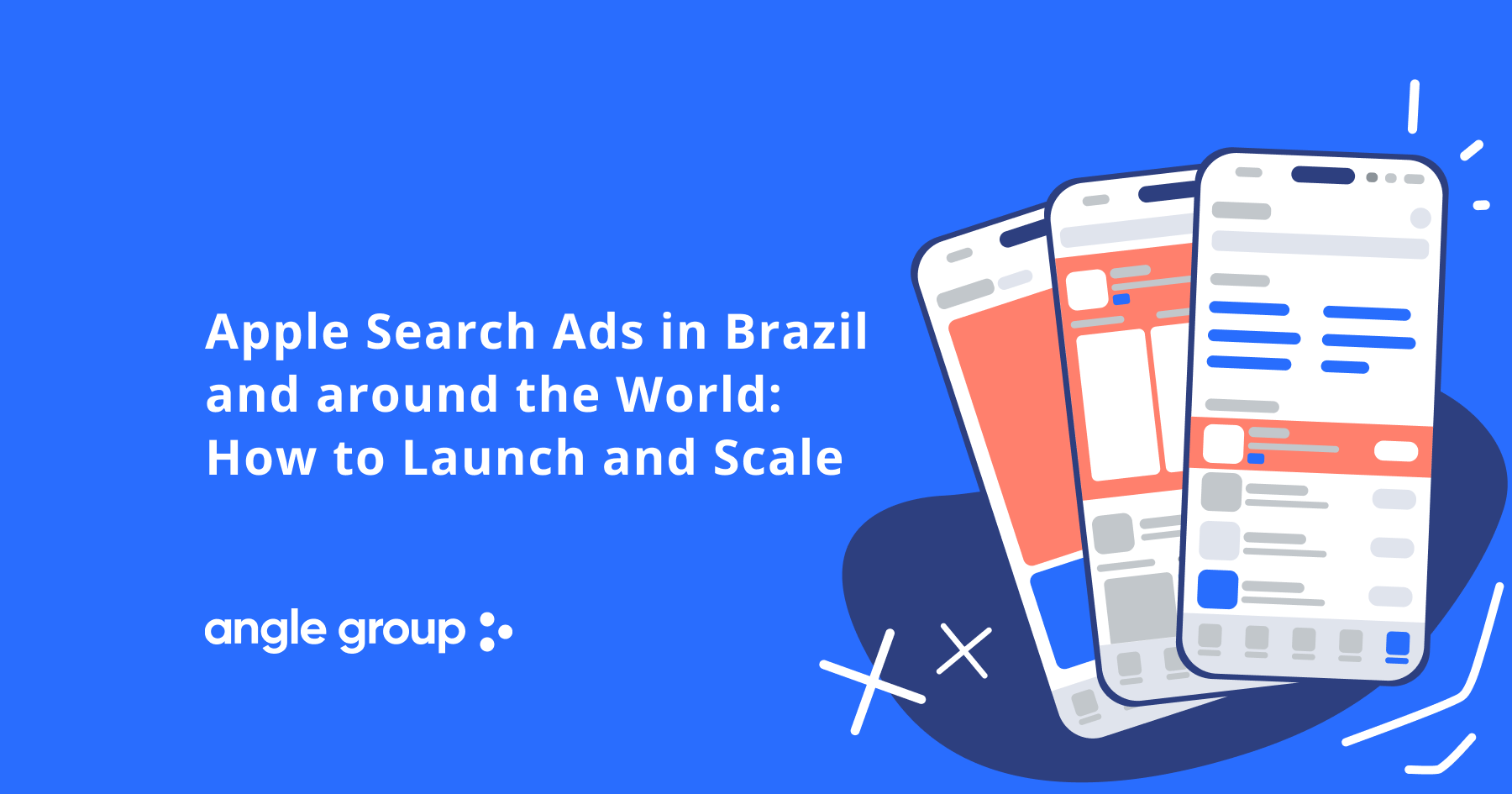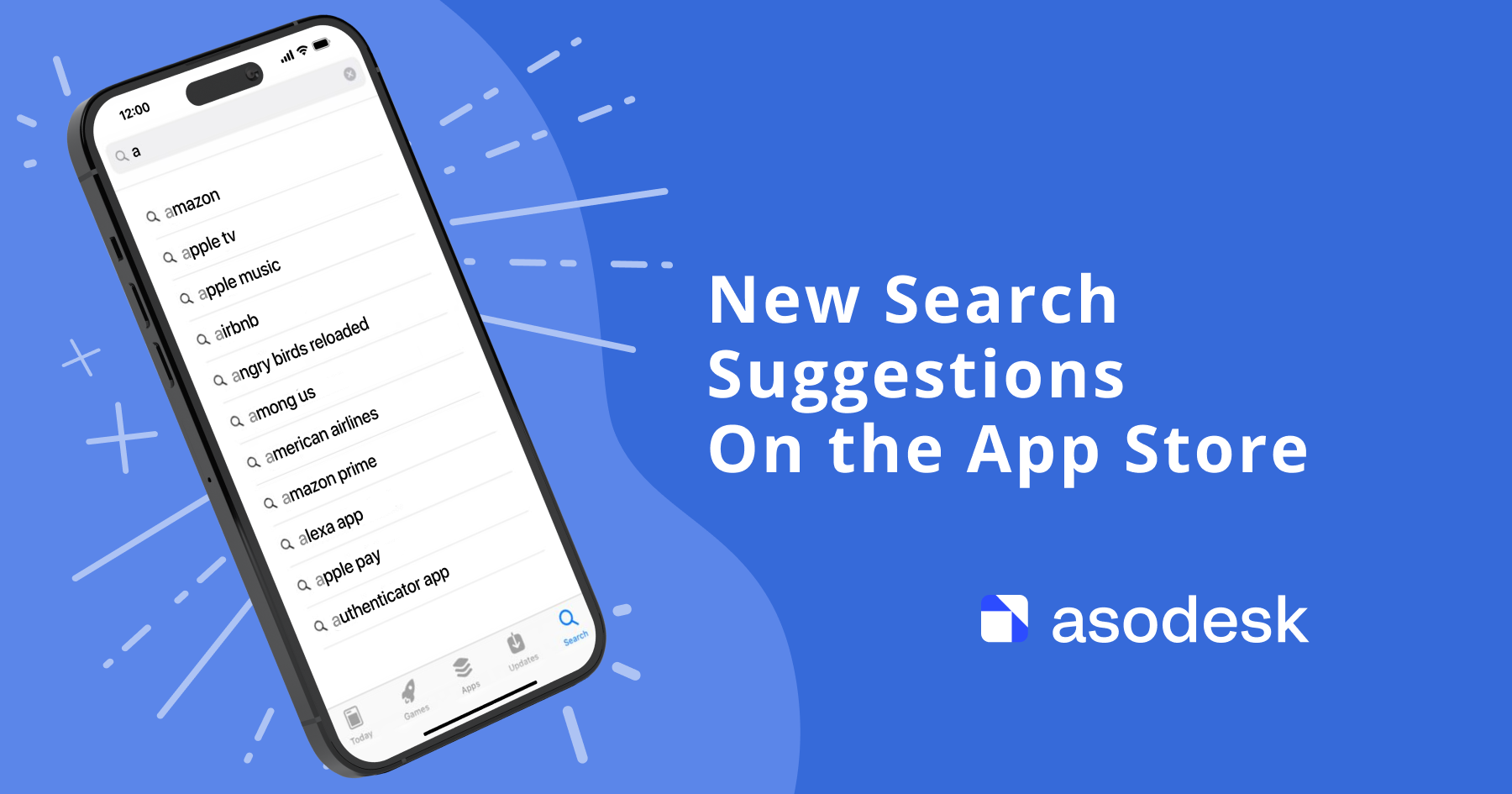How to enhance ASO with Apple Search Ads

With the right approach, Apple Search Ads (ASA) will not only serve as a promotion channel but also a source of useful insights and protection from competitors. In this article, we’ll discuss how to find the best queries using ASO tools and ASA, protect search results from other apps, and maximize the effect of ASO and ad campaigns.
Contents
What is Apple Search Ads and how does it work
How ASO and ASA help each other
When cannibalizing traffic in ASA makes sense
How to analyze the degree of traffic cannibalization
How to work with ASO and ASA as a cycle
What is Apple Search Ads and how does it work
Apple Search Ads (ASA) is a platform for advertising apps in the App Store. ASA ads are shown above the search results, as well as when you navigate to the search section.
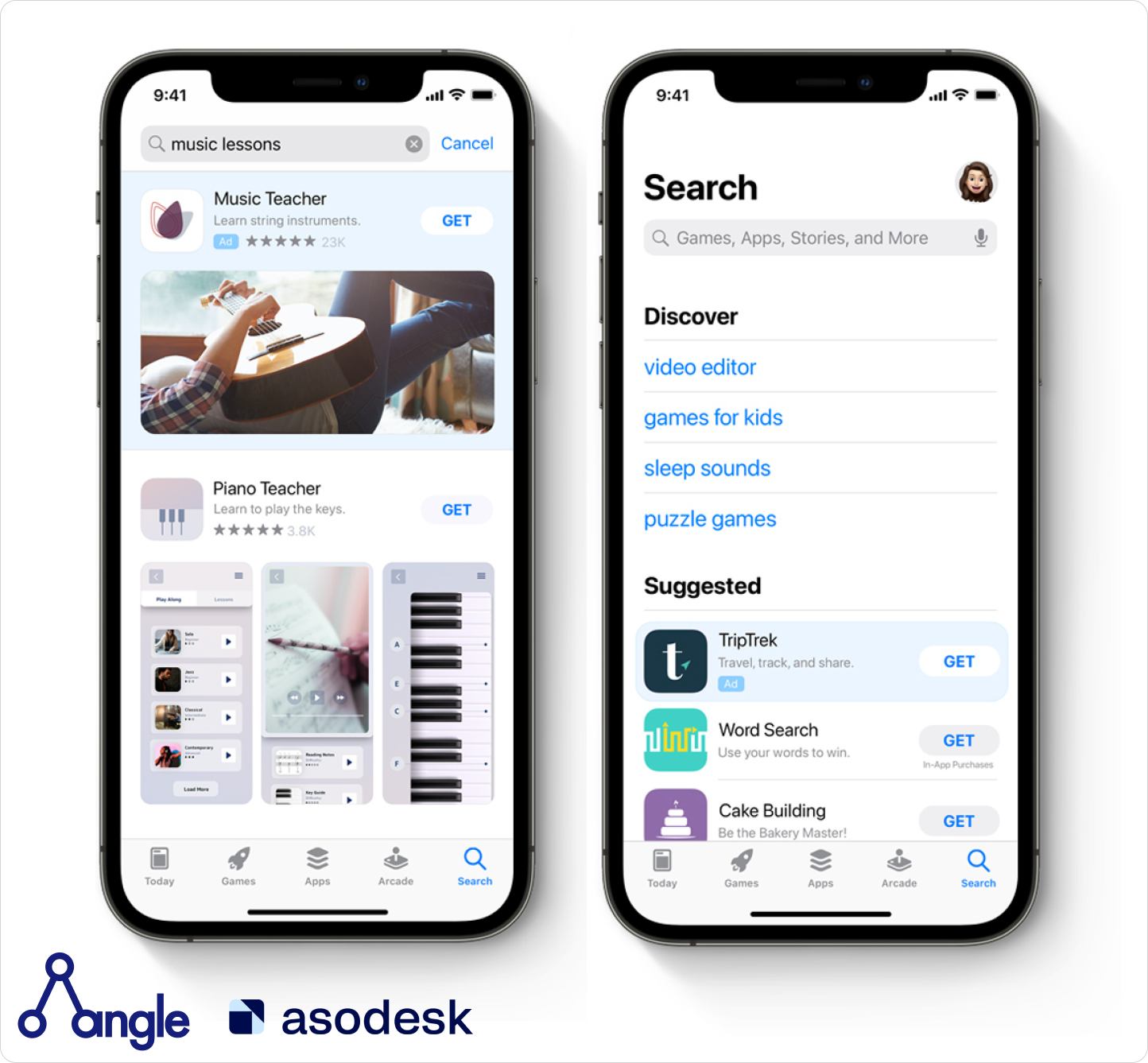
If you manage customization wisely, ASA will work very well. According to Apple, on average they show over 50% conversion from click to install. Apple Search Ads also reach a large number of users, because 70% of users download apps through search.
Apple Search Ads are automatically generated from application metadata. If a publisher uses the Custom Product Pages feature, they can add Custom Ads for different audiences and keyword topics. You can create up to 35 app pages and run up to 35 custom ads.
The advertiser needs to select a bid, set up targeting, and launch an advertising campaign. In Apple Search Ads Advanced, the advertiser pays for clicking on an ad (Tap). The cost of clicking is determined depending on the auction of the second bid.
This system allows you to place high bets and not worry that the cost will be overstated. But the cost may be high due to relevance, which depends on queries and countries.
How ASO and ASA help each other
If you use ASO and ASA together, you can maximize the effect of promotion in the App Store. Let’s look at a few cases where these promotion methods affect each other:
1. App metadata affects install cost from ASA. An ASO specialist must create metadata that will not only help the user find the app but also motivate them to install it. And the higher the install conversion, the lower the install cost in ASA.
Higher conversion also affects the app’s relevance to the user’s query, which makes it easier for the app to win the auction. Therefore, good metadata will ensure high ad purchase volumes and low ad costs for the app.
2. Thanks to ASA campaign analytics, you can get exclusive data on purchase conversion. ASA statistics allow you to see which queries users are most likely to download apps from. With the help of traffic attribution, you can understand which keywords lead to purchases more often, so that you can then target these queries in ASO. To learn more about how to analyze profits from keywords, read this article.
3. ASA tools help you find new queries for promotion in ASO. In the ASA ad account, you can check the suggestions of relevant queries for the app and then use them to expand the semantic core. To get recommendations for queries in ASA, use the Discovery campaign in Apple Search Ads.
In the Asodesk tools, you can also see Apple Search Ads suggestions for different apps and check their popularity.
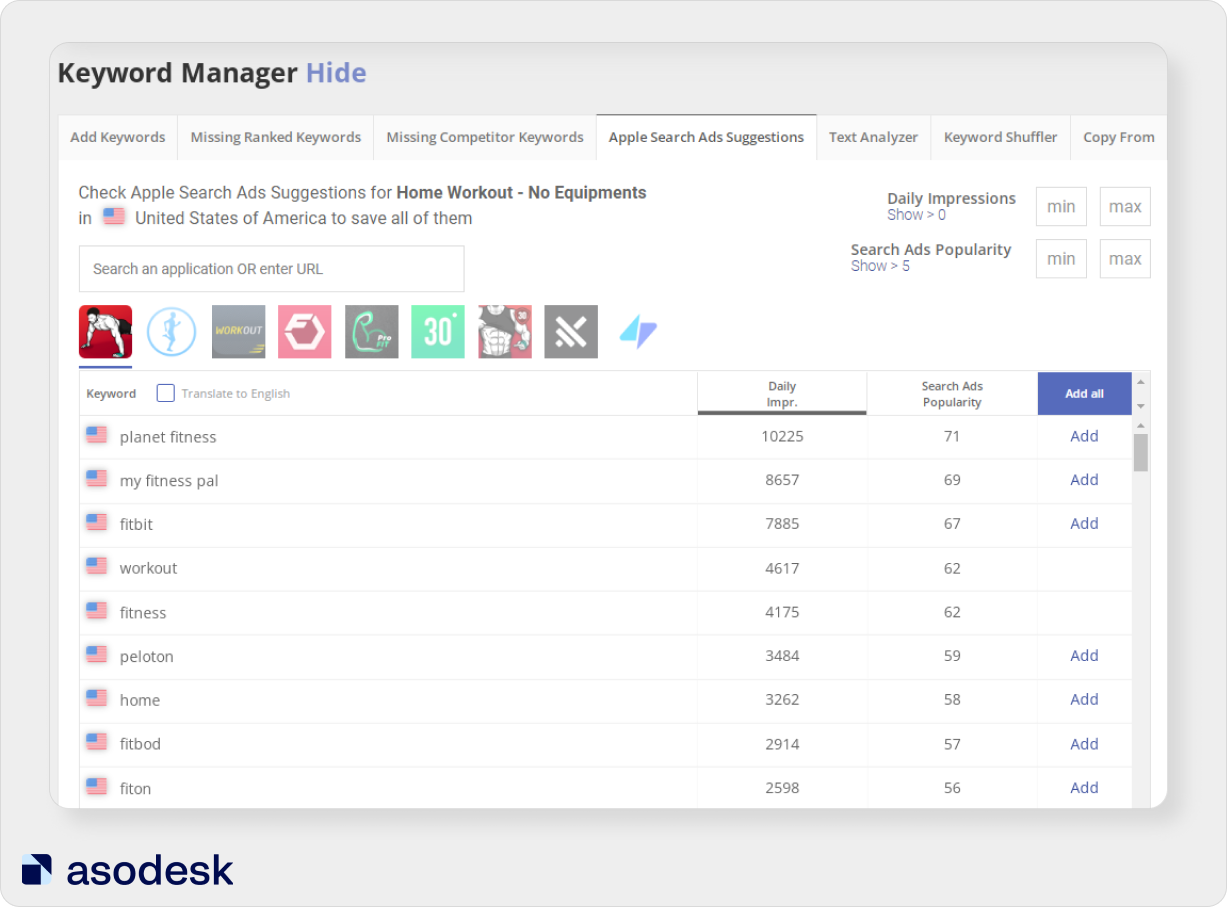
4. ASO tools help you find new queries for promotion in ASA. For example, you can use the Organic Report tool in Asodesk to find out which queries competitors are ranked and receive installs for in search.
Asodesk partner Angle Connect offers a new service: matching relevant queries for any app or game using proprietary technology based on computational linguistics. Leave a request on AngleConnect.com to learn more.
Estimated Installs shows the approximate number of installs per keyword.

Try Organic Installs and other professional Asodesk tools for your apps.

In the diagram, you can see the ASA and ASO cycle of working with queries. You need to find new queries using ASO tools and Discovery campaigns in ASA, check the positions for these queries in the tool, select priority queries, add them to metadata, and test traffic using ASA.
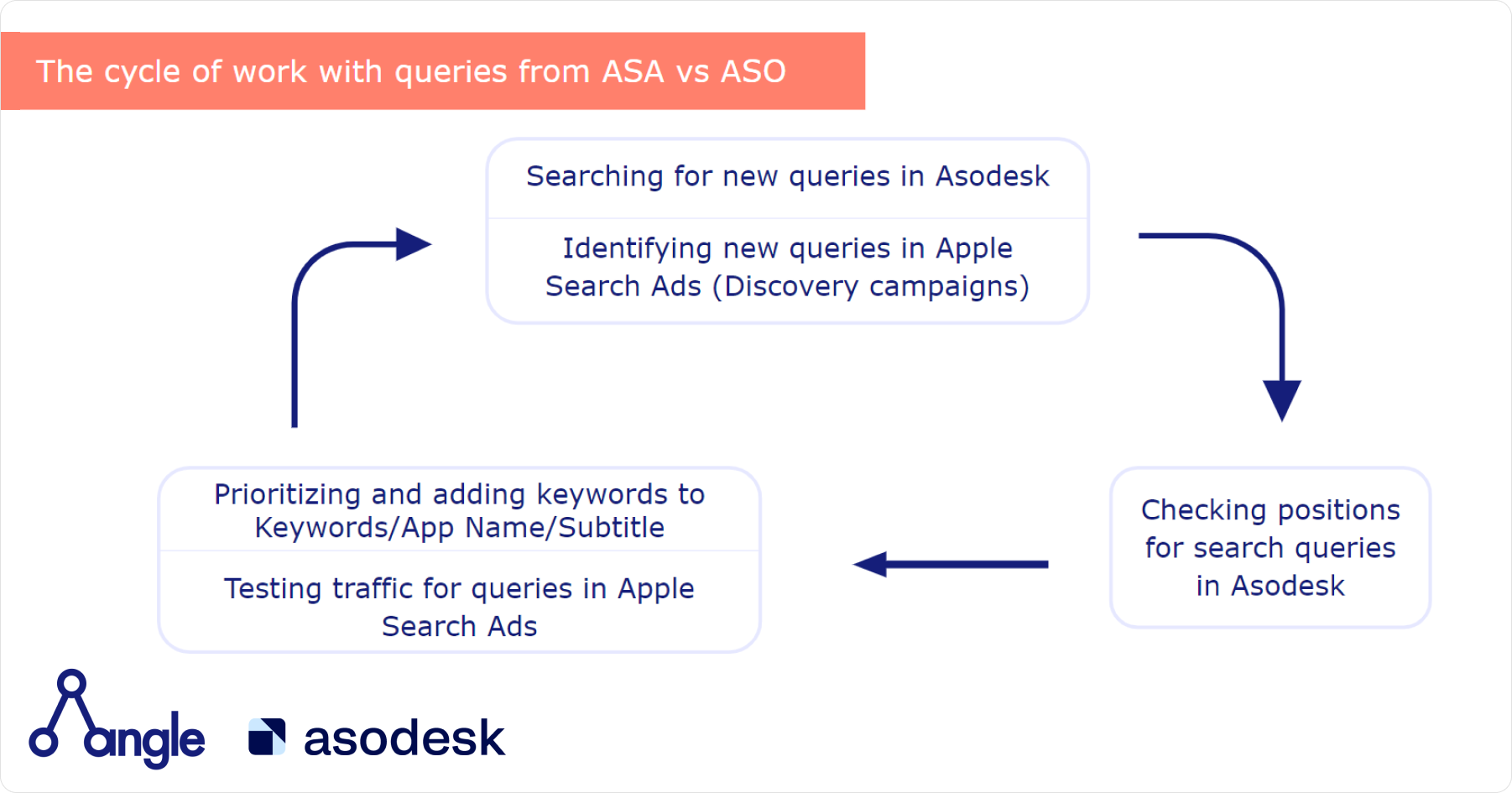
5. ASA protects search results from competitors. You can buy ads for those queries for which the app takes the top places. Then users will only see your app at the top of the search and are more likely to download it over your competitors’ apps. However, it is not always worth purchasing ads to protect search results. In the next chapter, we will discuss when a purchase can be justified and when not.
When cannibalizing traffic in ASA makes sense
By purchasing ads based on the top queries, you get additional traffic that your competitors used to attract. But in some cases, there is a risk of paying for downloads in vain, although you would have received it for free anyway due to app installs from search. This overpayment is called search traffic cannibalization. Let’s see when it’s acceptable and when not.
1. Cannibalization of traffic is justified
It makes sense to run ads in ASA if you’re promoting for non-branded queries, and your app is similar to a competitor’s. This is the case with the Scanner App.
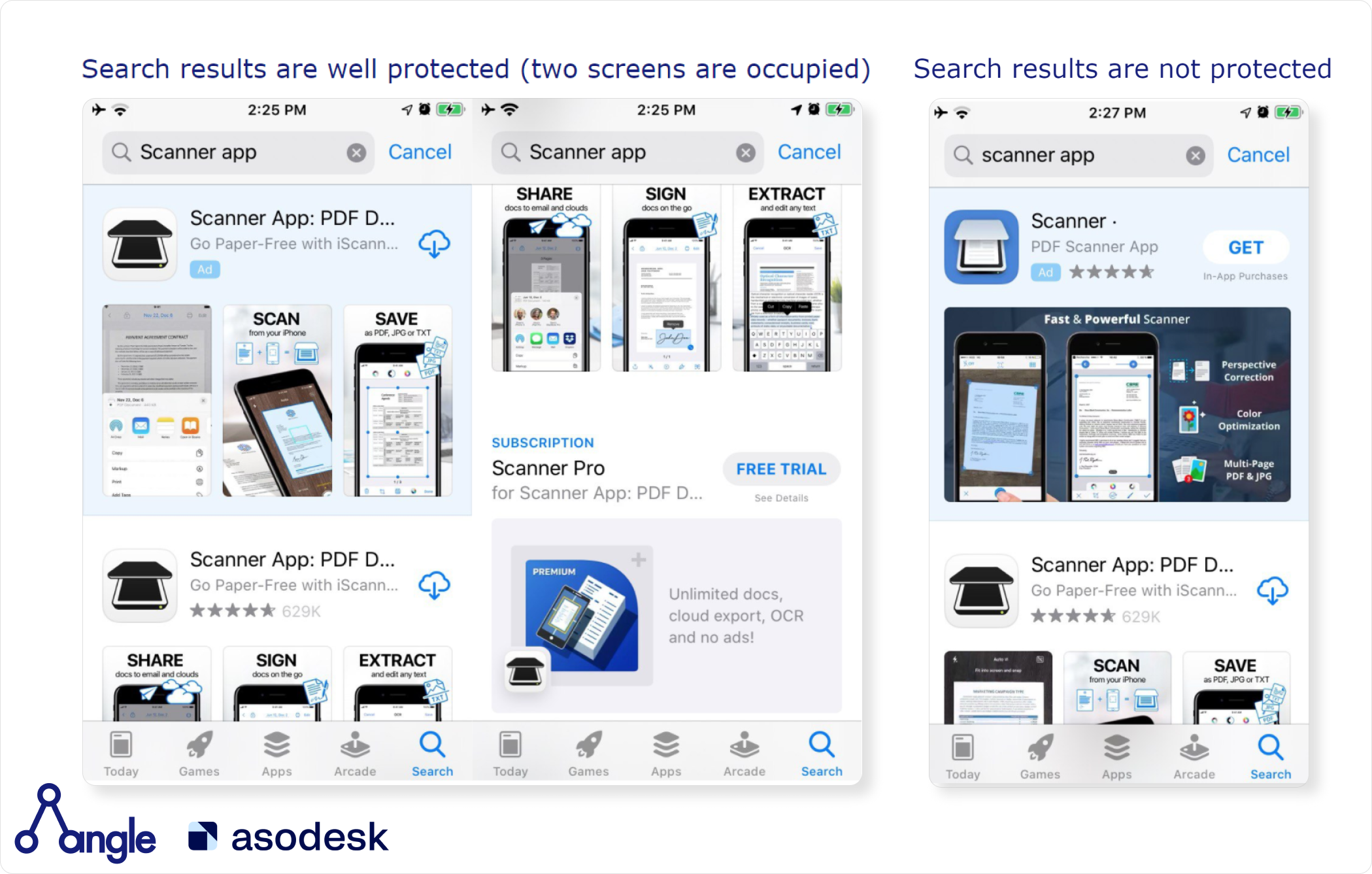
On the left, you can see what the purchase of advertising resulted in. Now our app occupies two screens of search results at once, and the closest competitor is only on the third screen. The user will have to scroll through the feed to find a competitor. If we hadn’t bought an ad, a competitor (another scanner app) might have done so. Many scanners are visually very similar to each other. If a competitor’s app is higher in the search results, the user is more likely to install it, and not our app.
In this case, it was more important to protect traffic than to prevent cannibalization.
2. Cannibalization of traffic is not justified
In the second case, we set up ads based on the branded query “airbnb”. When a user enters a branded query, they know which app they want to find in advance, and are unlikely to confuse the desired application with another since competitors are visually very different. Therefore, the need to purchase advertising with cannibalization for branded queries is questionable.

We managed to occupy only the first screen, while on the second screen the user can already see a competitor’s app.
Please also note that the apps are completely different, so users won’t confuse them and accidentally install another app. In this case, the effect of protecting search results is not so strong.
What are the differences between these two examples:
1. In the first example, we use a generic query, and in the second it’s a branded query.
2. The Airbnb app and the second app are not similar, while the scanner apps are very alike.
3. The Scanner app managed to occupy two screens at once by promoting an in-app purchase, while the second app managed to occupy only one screen.
In this way, the protection of search results from competitors will be justified if: you buy ads based on non-branded queries, your app is visually similar to competitors, and you have the opportunity to occupy two screens in the search results at once. If you buy ads based on your branded queries and your app is very different from your competitors, there is a high risk of cannibalization.
You should also decide what is more important to you: campaign cost-effectiveness or protection from competitors. Because of cannibalization, the campaign may not be profitable enough, but your app will definitely be protected from competitors.
How to analyze the degree of traffic cannibalization
It is important not only to assess the probability of cannibalization before launching an ad campaign but also its degree after the campaign.
To determine the degree of cannibalization, pay attention to these two metrics:
1. Search traffic in App Store Connect. In App Store Connect, in the App Analytics section, you need to look at the First-Time Downloads metric — the number of first app downloads. It is important to see the indicator only from the search, so you should use the filter by Search source.
2. Advertising traffic. At searchads.apple.com you can find out the number of new app downloads from Apple Search Ads. This metric is called New Downloads.
If we subtract the number of first installs that came from the ad from the number of all app installs, we will get installs exclusively from the search results. So, to determine the number of organic installs, use the formula:
Organic Search Units = First Time Downloads – New Downloads
Download data will help you analyze in what situations it was necessary or not necessary to purchase advertising. In the charts below, the blue bars represent First Time Downloads from App Store Connect App Analytics, filtered by Search source, and the red bars represent New Downloads from Apple Search Ads; the blue and red columns start from zero. Consider three examples:
1. When Apple Search Ads was enabled, total app downloads increased by the number of new ad installs.

In this case, we don’t see cannibalization, but the incrementality — new installs were added to previous ones.
2. In the second case, during the advertising campaigns, the total number of downloads did not change significantly.
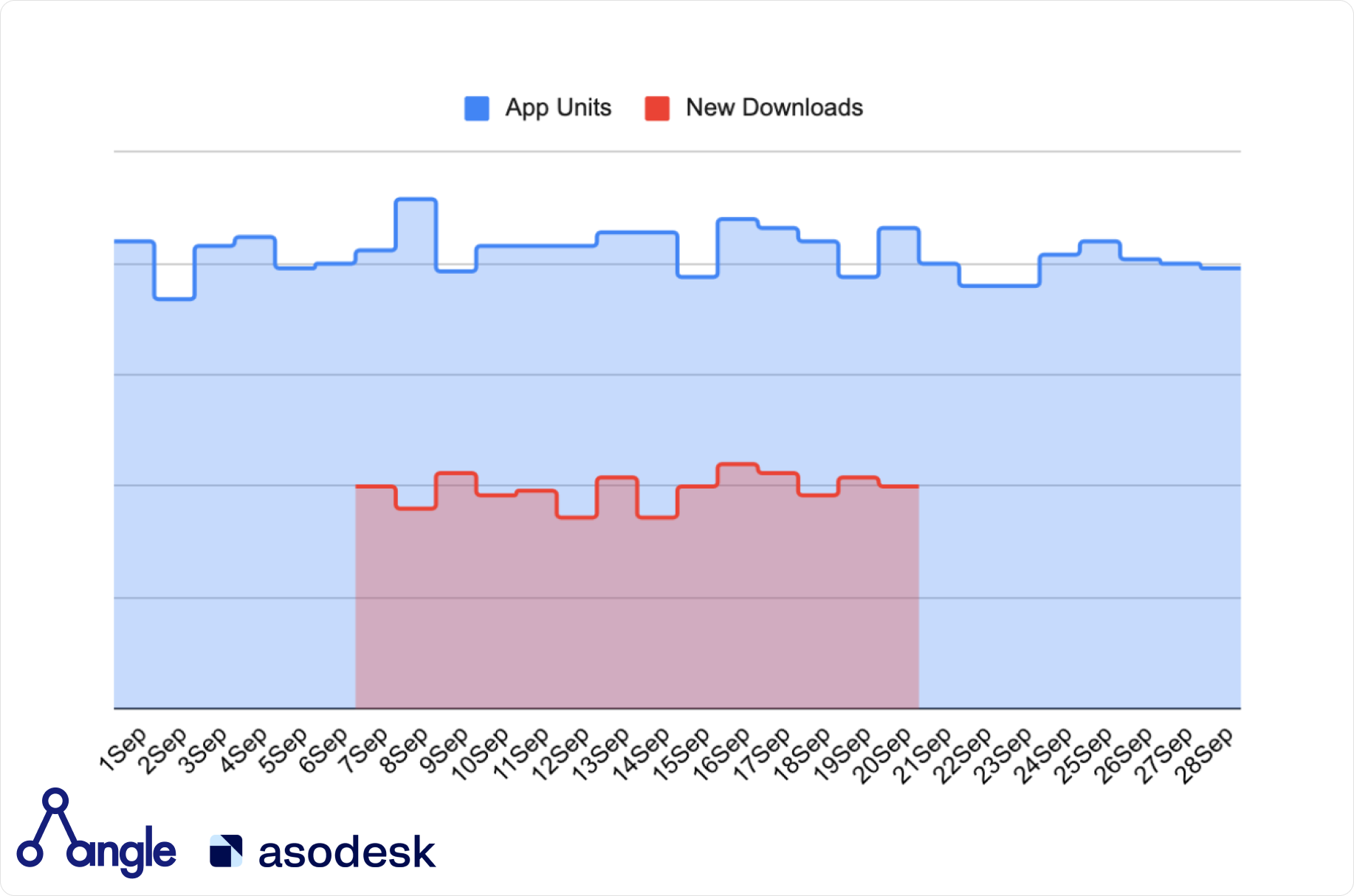
We see cannibalization: we could have received the purchased traffic for free.
3. In the third case, we see that the volume of new installs is much smaller compared to the total volume of installs.
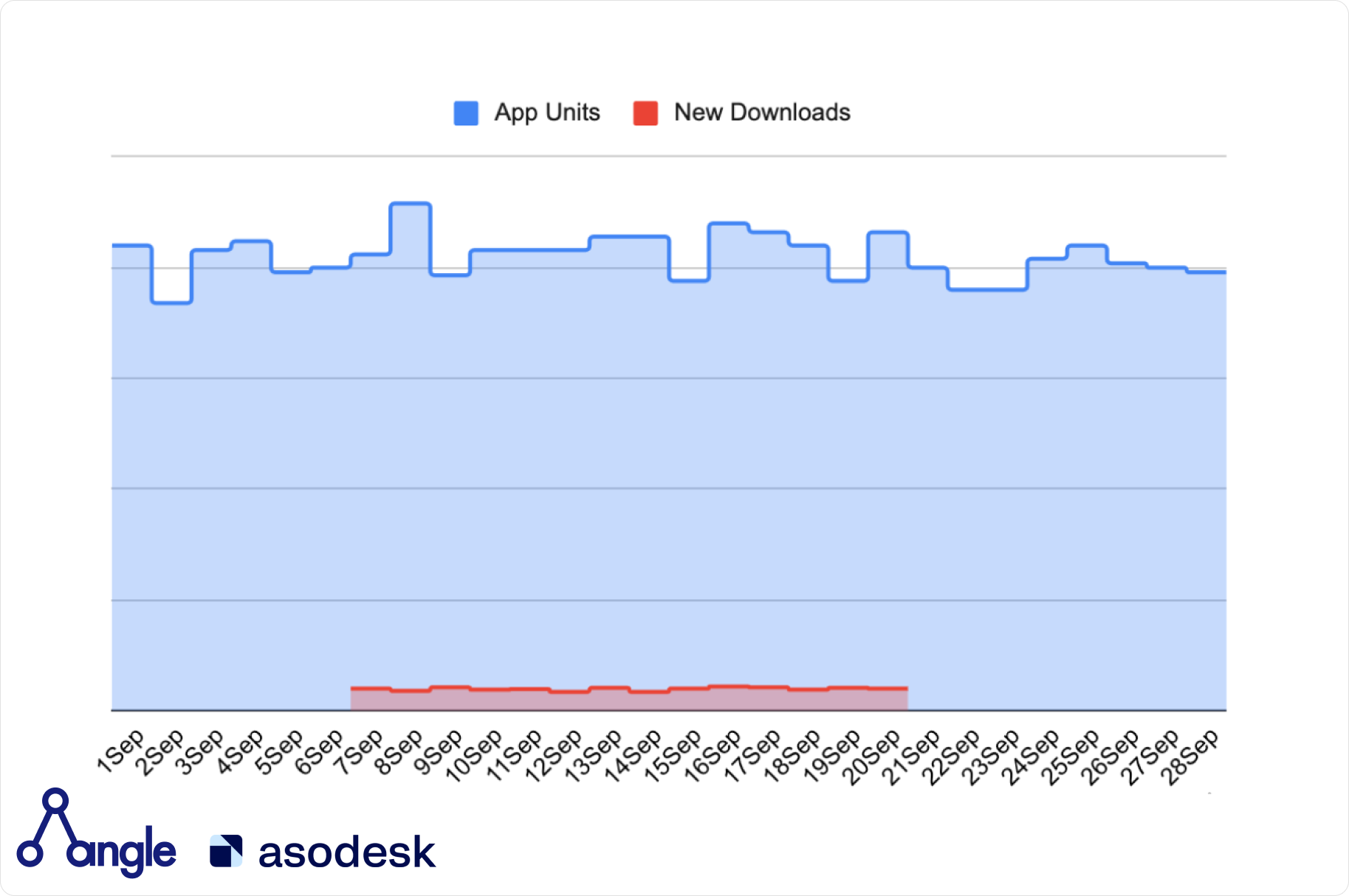
Perhaps, the developer purchased very little advertising, or the conversion from viewing the app page to installing the app was too low. Therefore, we cannot make any conclusions about traffic cannibalization or incrementality. The picture can only be complete if we compare the volume of new installs to the total volume of installs.
This way, to determine the degree of traffic cannibalization, you need to look at the change in the level of total downloads from search when turning ads on and off.
How to work with ASO and ASA as a cycle
1. You need to find queries for which users can search for your app in the App Store, check the position of the app for them, and add suitable queries to the app metadata. To select queries, you can use ASO services, Apple Search Ads suggestions, or entrust the task to specialists by ordering a service for synthesizing and determining the relevance of search queries from Asodesk’s partner, the Angle Connect agency.
2. After a test advertising campaign in Apple Search Ads, we can determine which queries users use more often to make purchases in the app.
3. To protect your search results from competitors, you can launch an ad campaign for queries from the top 1–2 of the search. However, it is important to assess the possible degree of cannibalization using qualitative methods, and see its real degree after the ad campaign.
We hope our article helps you to work with ASA and ASO as a cycle more effectively. Subscribe to our newsletter to receive useful articles on ASO, ASA, mobile marketing, working with reviews, as well as monthly news digests.

